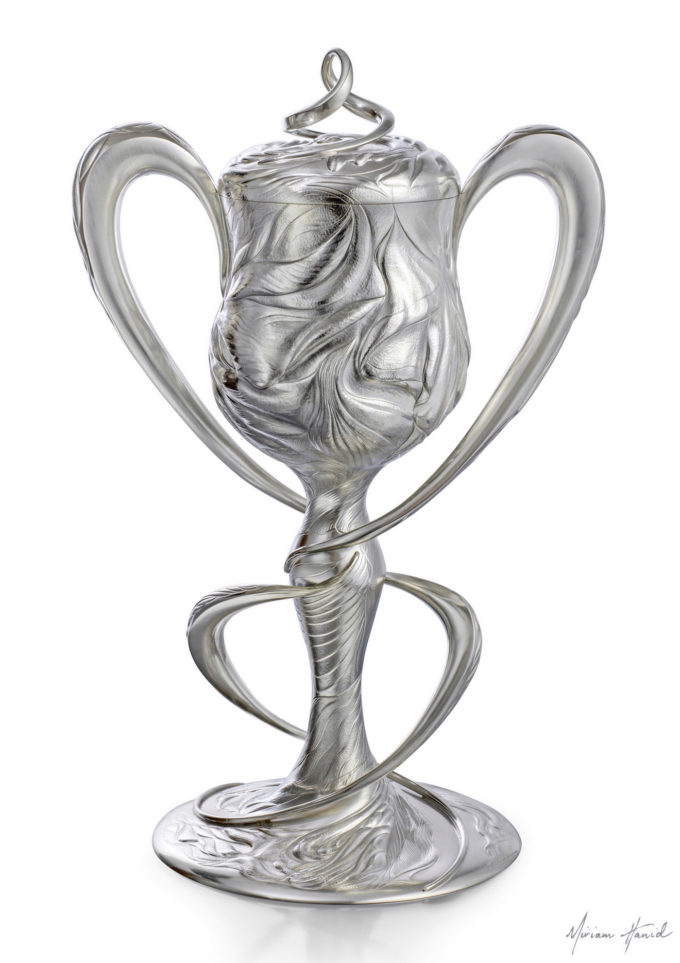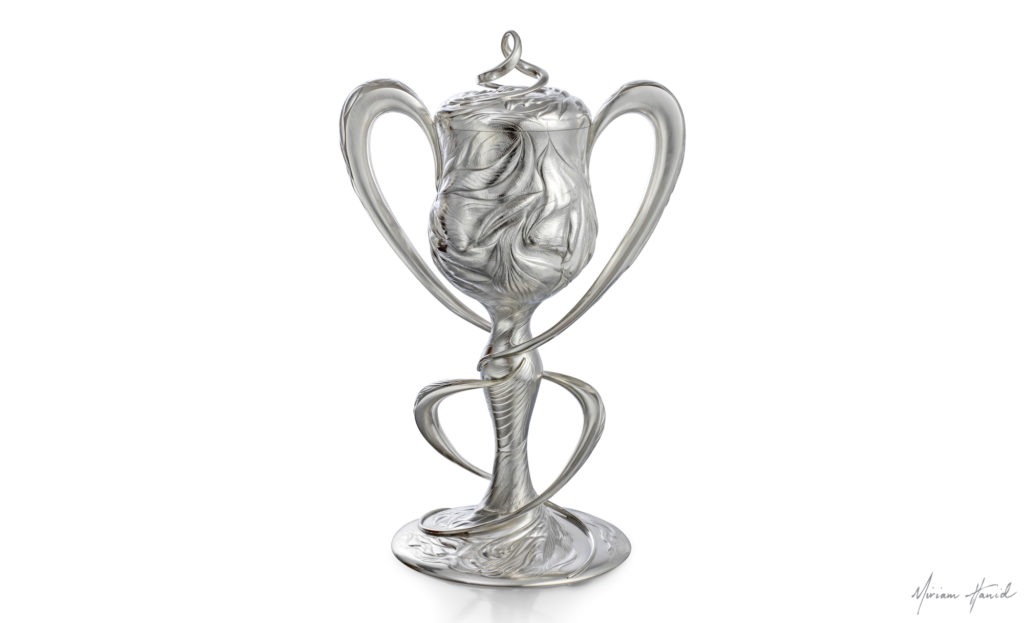
One of my most important projects during 2020 was the Cascade Loving Cup, commissioned by the Clothworkers’ Company. Since writing this blog, and running a series of Instagram posts charting its’ making , the Cascade Loving Cup has received two awards in the Goldsmiths’ Craft and Design Awards 2021 – a Gold Award in Chasing and a Bronze Award in Silversmithing Design.
“Judges remarked that there was superb planishing and texture details, and that the work was deeply three-dimensional, technically challenging and realised.”
The Goldsmiths Craft and Design Awards, 2021
Two silver loving cups were commissioned by The Clothworkers’ Company, one to commemorate the 500th Master of the Company and the other to mark the appointment of their first female Master, two important milestones in the organisation’s history. I was really thrilled to be shortlisted and subsequently selected to make the latter piece, the former having been made by Yusuke Yamamoto.
Although the brief for the design was fairly open and could be drawn from any source of inspiration, my Cascade cup was influenced by flowing fabric and yarn fibres. I asked the first female Master – Carolyn Boulter – a few questions about her year in the position to get a flavour of what it meant to her. I also researched the historic process of making cloth from raw wool – combing it with a teasel, then on to the fulling (cleansing) and weaving processes.
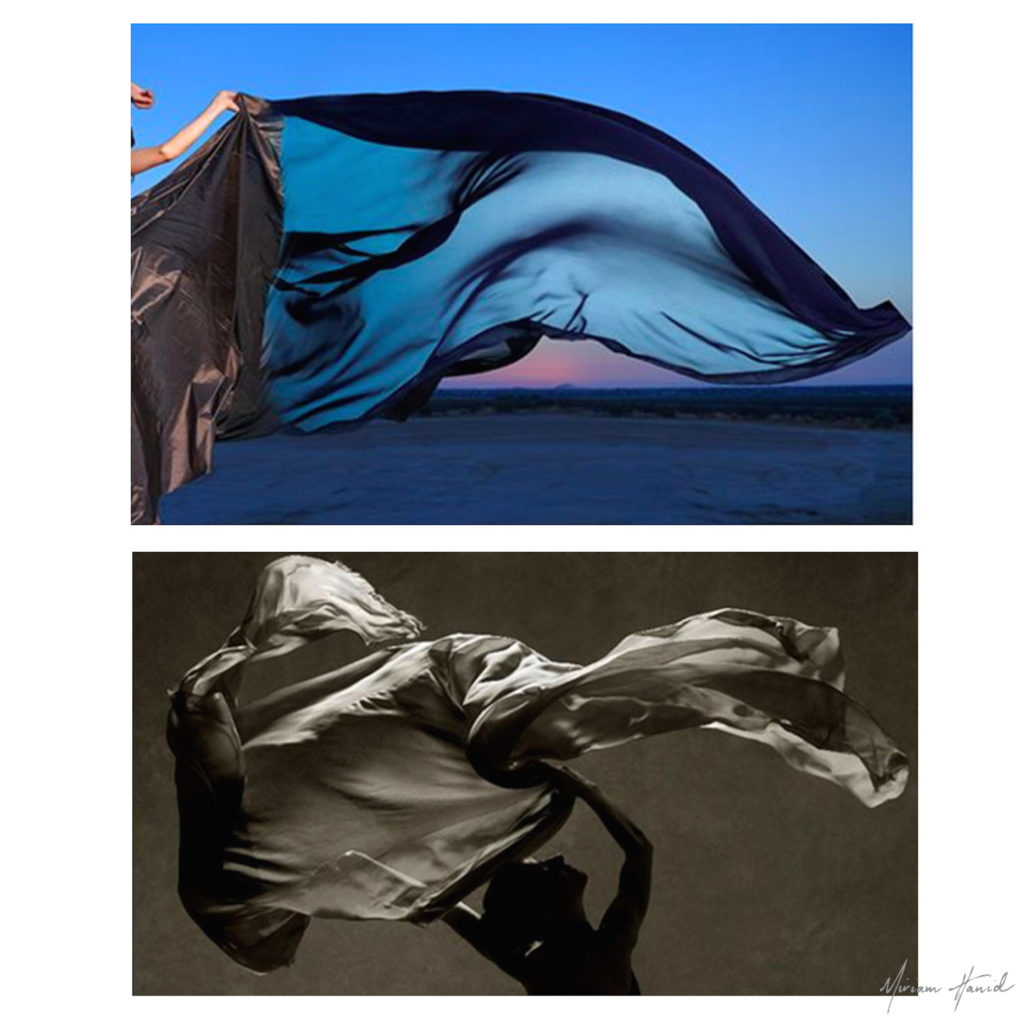
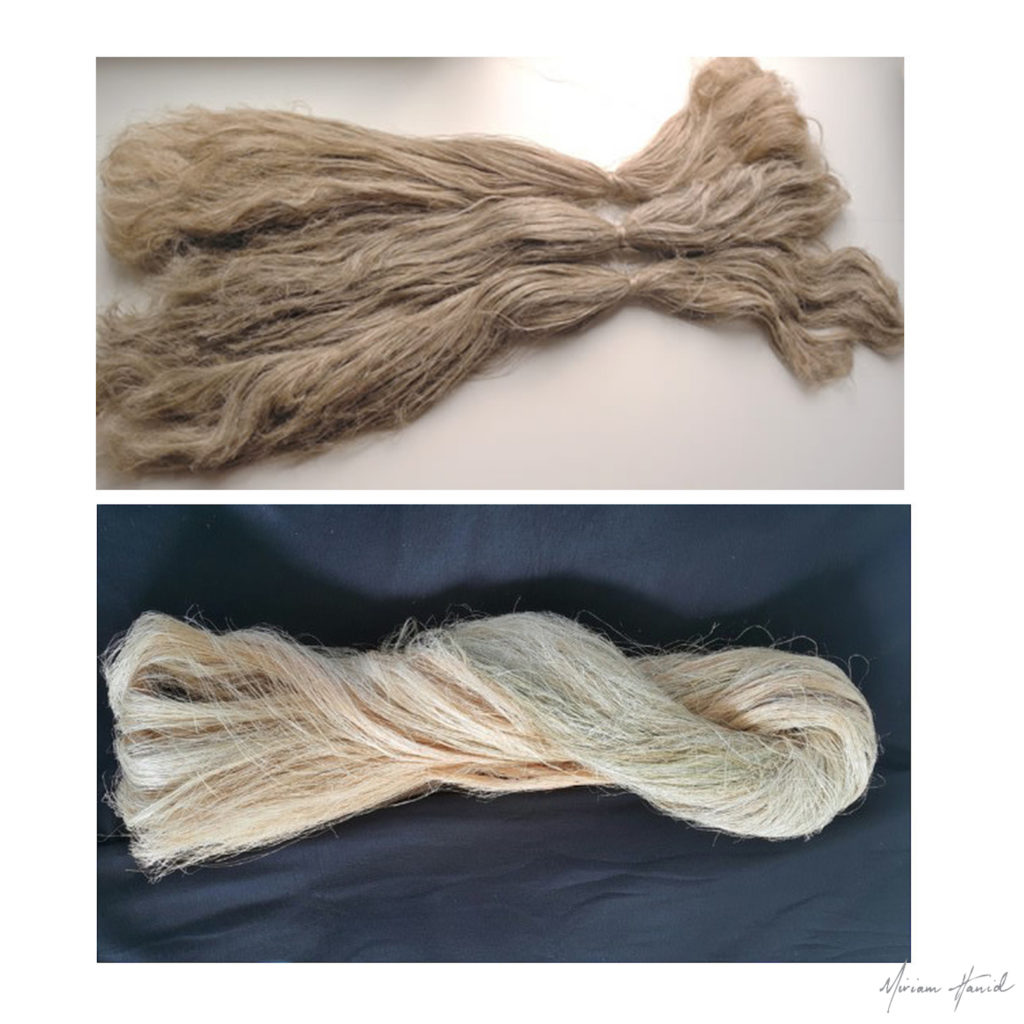
I subsequently chose to focus on the beauty and allure of the end product, the cloth itself, rather than elements of the process. I love how the flowing nature of fabric leads it to fall into different shapes with a natural aesthetic within its many drapes and folds, especially when blown by the wind. This is the idea I sought to capture in the overall design of the cup, the impression of a piece of fabric swirling in a helix of movement.
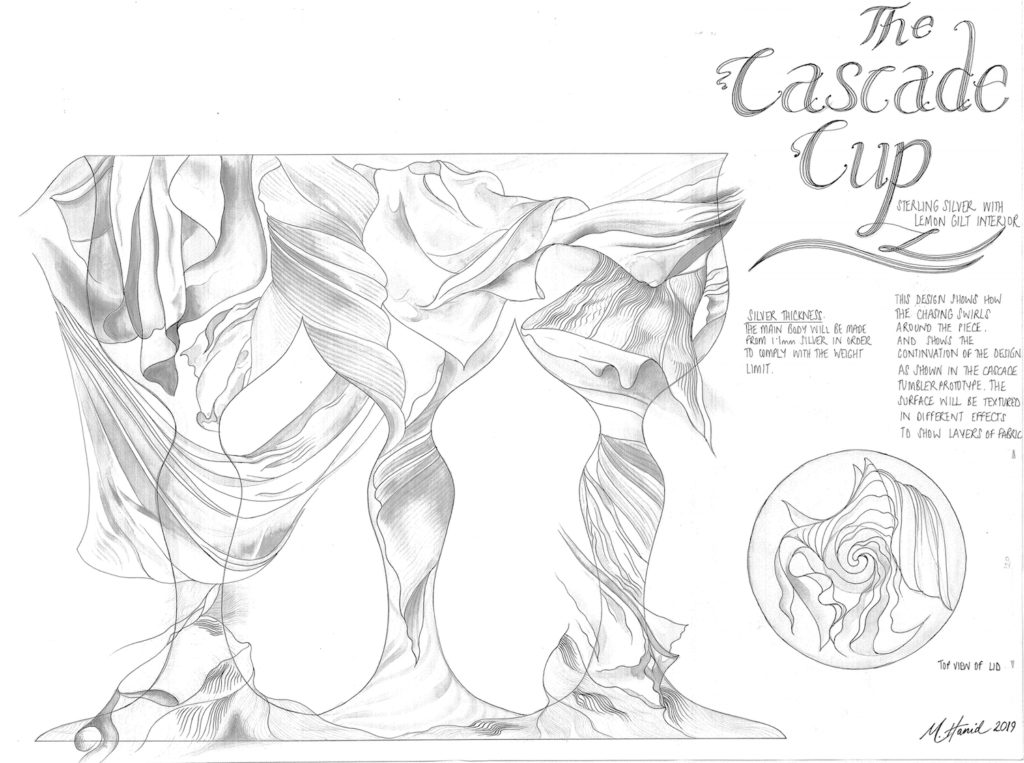
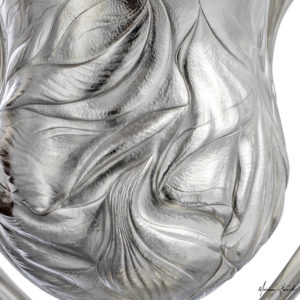
I also wanted to use the opportunity of this special commission to push my chasing and repoussé skills to the limit and produce a showstopping piece that displayed extensive new work. The form was first filled with pitch (a tar-like substance) and chased from the outside with handmade steel punches. Then I worked it from the inside using a bespoke snarling iron for which I have different sized heads – this enabled me to manipulate the metal from both sides to give it additional relief and depth. A snarling iron is a Z-shaped tool – one end goes inside the vessel while the other is held in a vice.
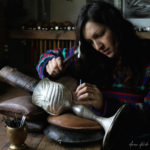
Once in place it is then hit with a hammer in the middle (which is slightly springy) and the section inside the vessel bounces up and down shaping the silver and pushing it outwards from inside. Once a round of snarling is completed, the vessel is filled with pitch again and chased to push elements of the metal down to add definition to the snarled areas. I snarled this piece twice in certain areas such as the bowl of the cup, in order to achieve extra depth.

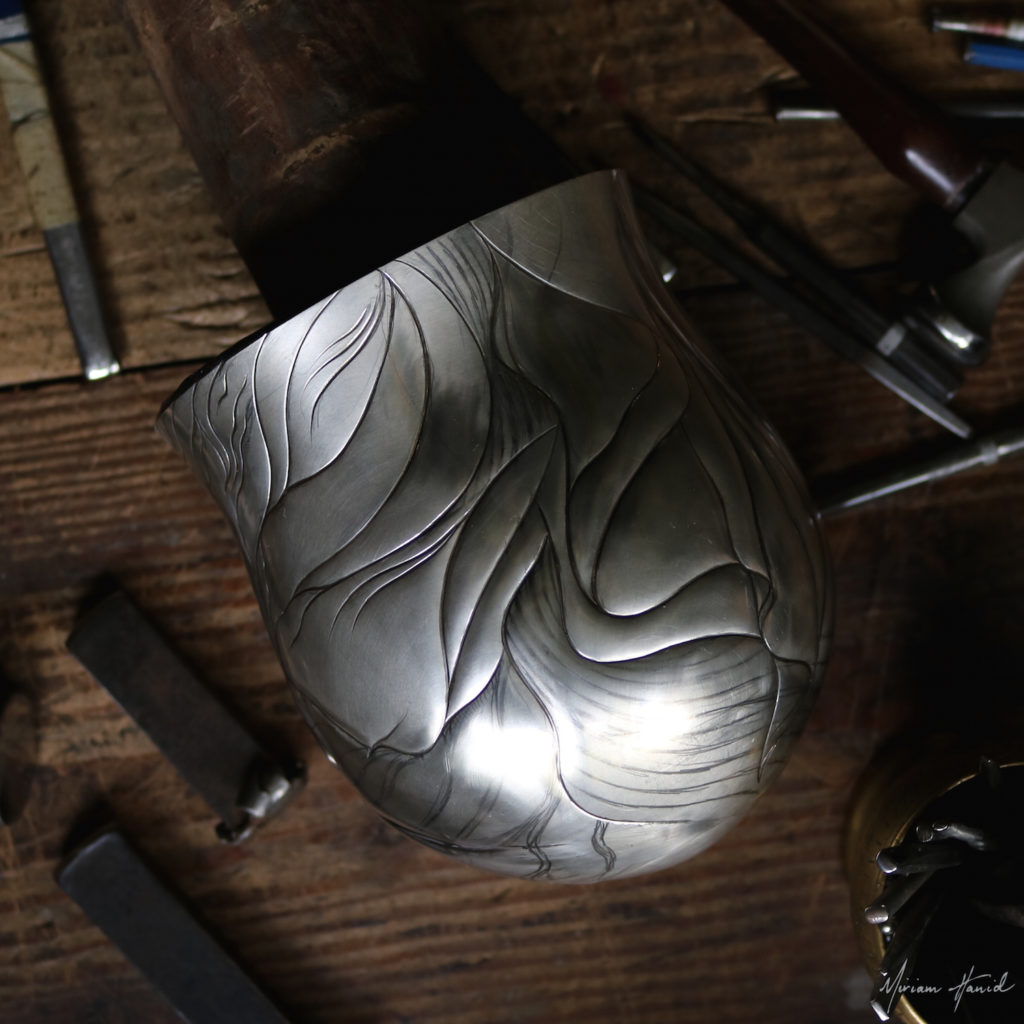
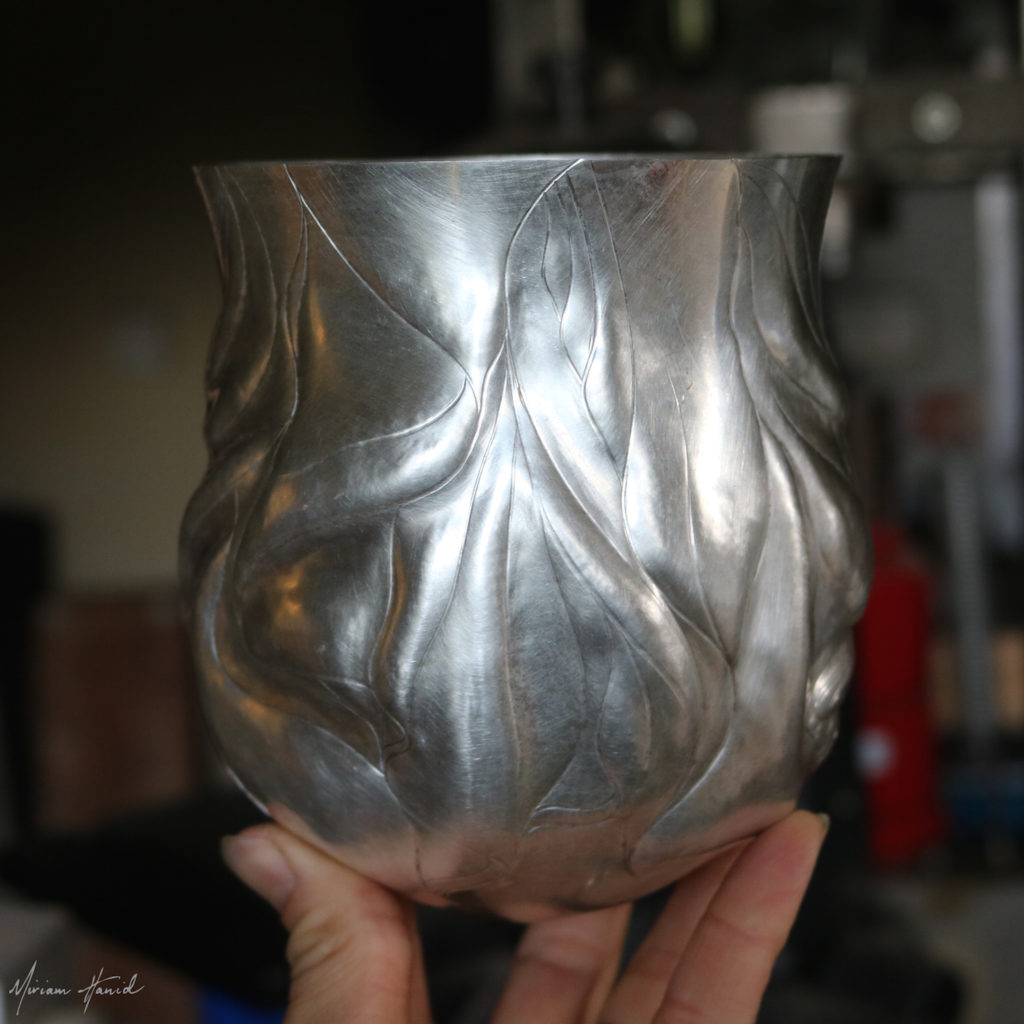

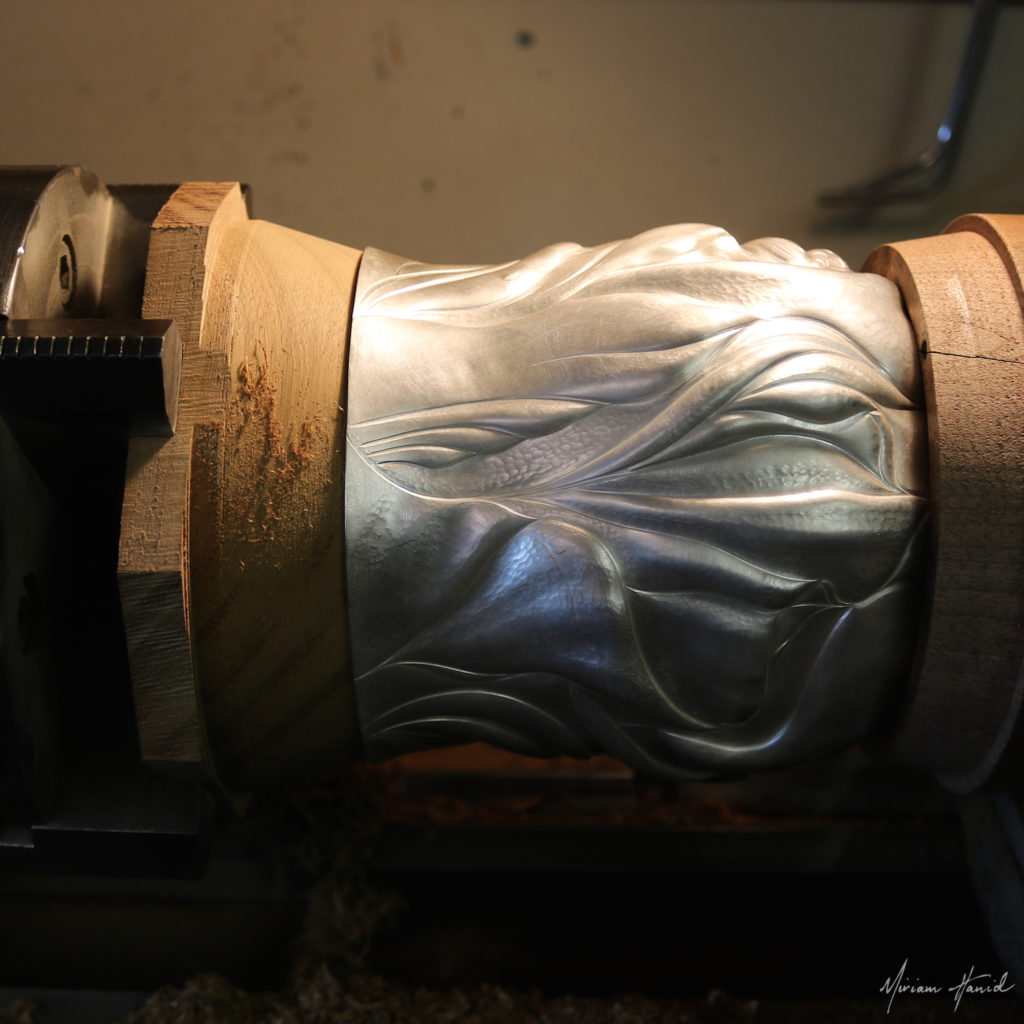
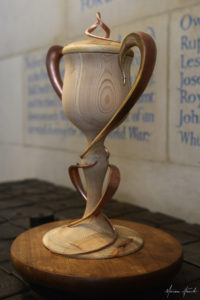
In order to further develop my chasing technique within the Cascade Cup, I chose to collaborate with another silversmith – Jenny Edge. Jenny and I worked together on the piece’s handles using drawings and then modelmaking and maquettes by Jenny to develop the distinctive swirling effect in the handles as they rise, twisting elegantly from the stem.
Jenny sent me the decks (outer flat faces) of the handles so that I could chase them before they were soldered together, in order to carry the chased design through the handles themselves. Their inside curves were created using a silversmithing technique called ‘anticlastic raising’ where the form of the silver is in two opposing curves. Jenny is an expert in this field and it was fascinating to work with her on this project and to draw on her forming, structural and fabrication skills.
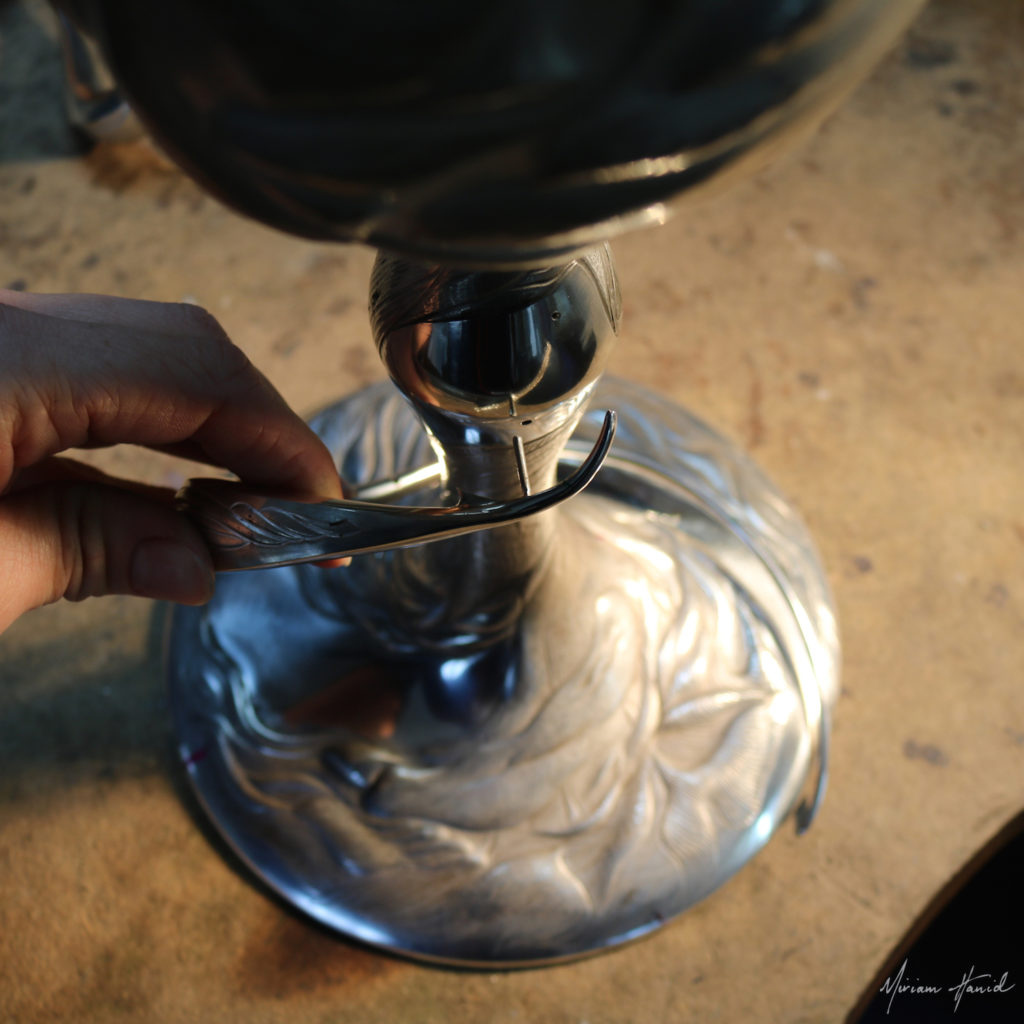

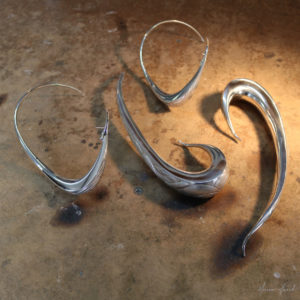
After I had chased the cup and Jenny had soldered the handles together and polished them, we spent a whole day together affixing all four handles to the cup in the JASSO Silversmithing workshop in Abingdon, Oxfordshire where Jenny is a tutor. It is always a pleasure to collaborate with another experienced silversmith, and we each brought individual strengths to the task resulting in a successful and wonderfully pleasing set of spiralling handles which greatly enhance the characteristic flow of the Cascade Cup.
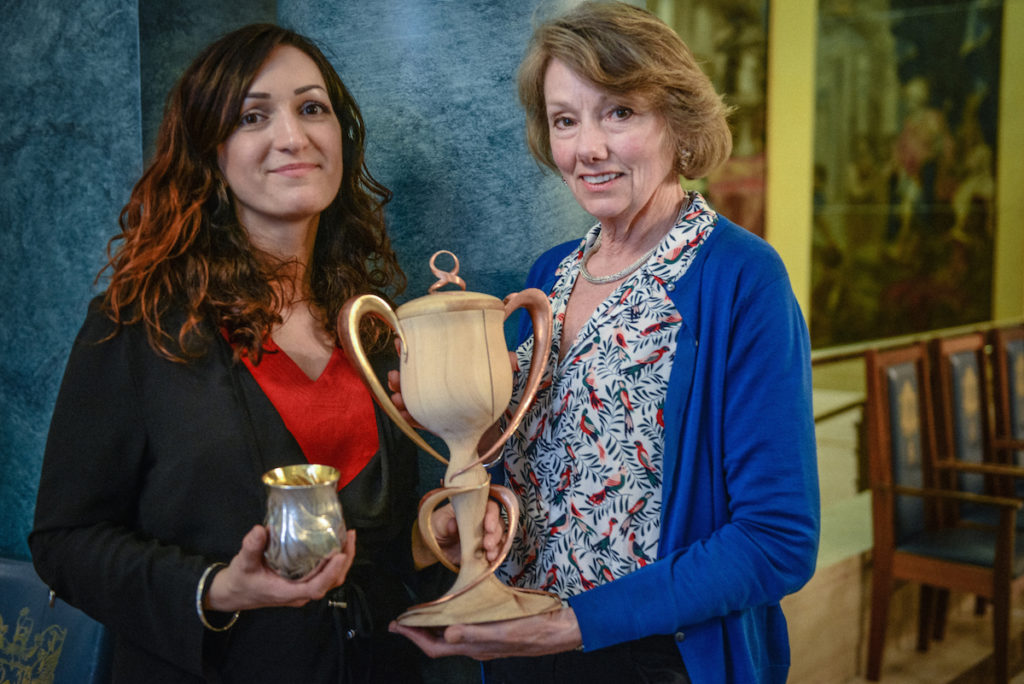
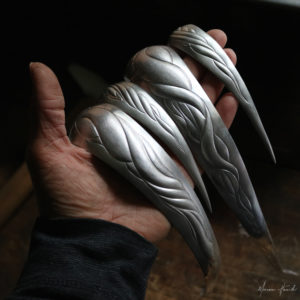
“The loving cup for the Clothworkers’ Company was an exciting project to be involved with. With Miriam’s lovely chasing giving a feeling that the cup was made of silver cloth, it was a pleasure to design the handles so that they, too, flowed around the cup. Additional movement was created in the design of the handle on the lid.
The handles were created using anticlastic raising, a technique that lends itself to these flowing forms. It adds strength in the handles without too much weight, a necessary requirement as the cup is to be used for dinners by the Clothworkers.
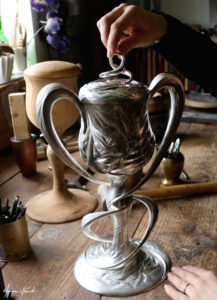
Miriam and I collaborated closely with the making and fitting of the handles, firstly with the design of the handles around her wooden model cup and then we decided that chasing the deck of the handles would bring the design of the cup and the handles together. This required Miriam to chase the deck of the handles before I fitted them to the bases of the handles. The challenge was to ensure that the chasing remained in the correct position along the backs of the handles whilst they were fitted.
I hope that the handles add to the feeling of a classically designed cup with a modern twist, and that the Clothworkers’ will have pleasure in using the cup.”
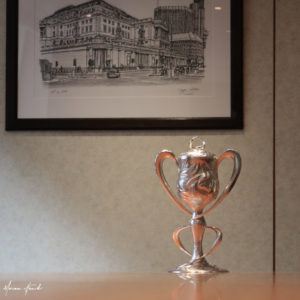
I consider this piece to be one of my most significant works to date, and although its making was considerably delayed by the ongoing health restrictions in the UK during 2020, with trade services such as the London Assay Office and laser welding, among others, being closed, I was overjoyed to finally deliver the piece to Clothworkers’ Hall in October 2020.
Here is a short video featuring the finished piece, filmed by Frances Kennedy, which I co-scripted with Emma Boden. The music is by Liam Brown.
You might like to view my video gallery to see other short films of my latest silver pieces, or peruse the gallery or commissioning pages to see other works and read more about the process.

